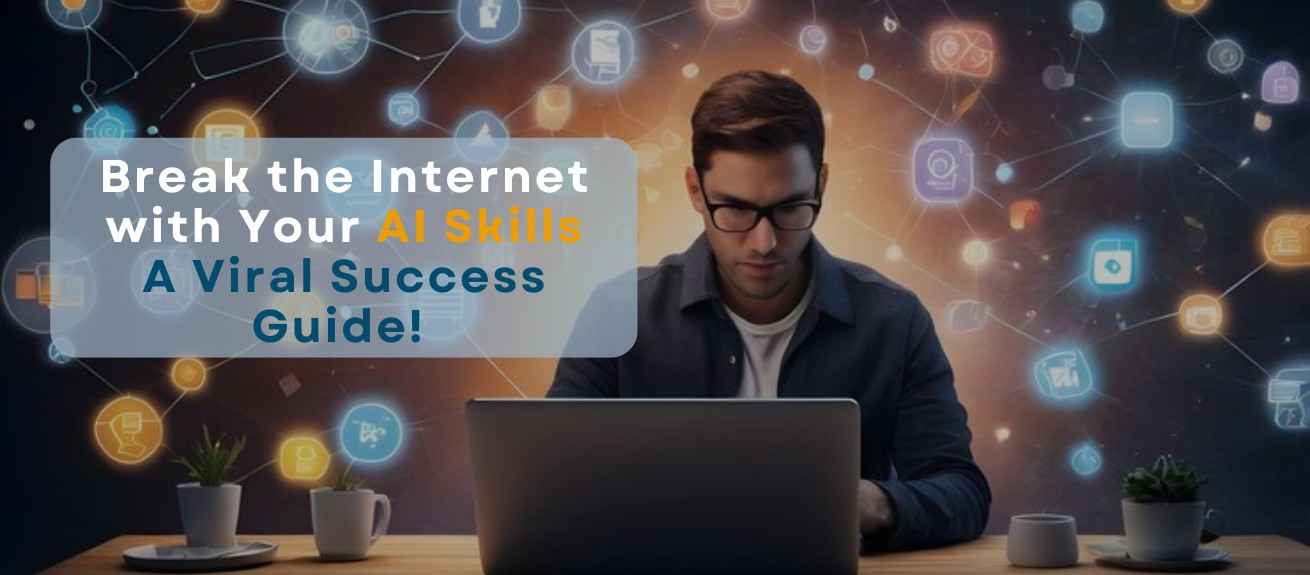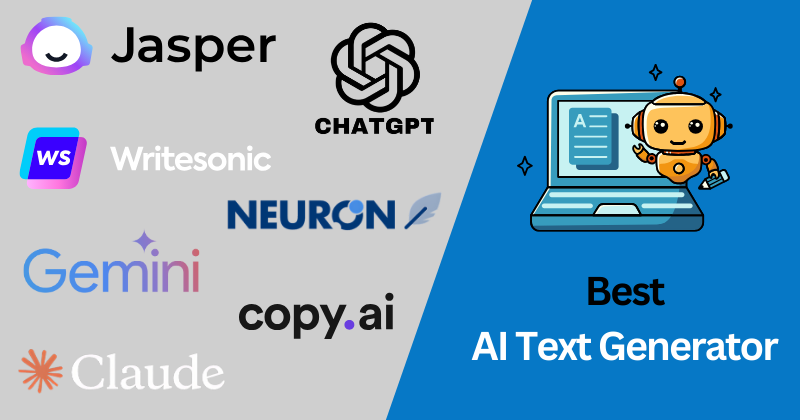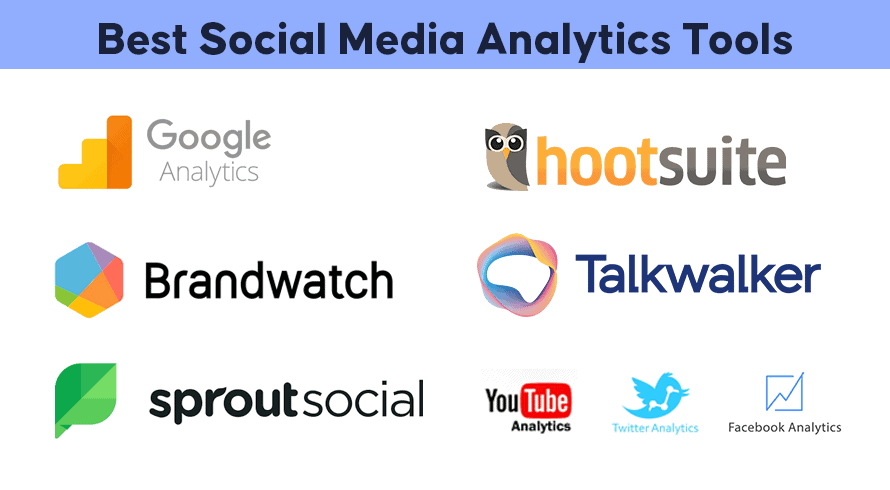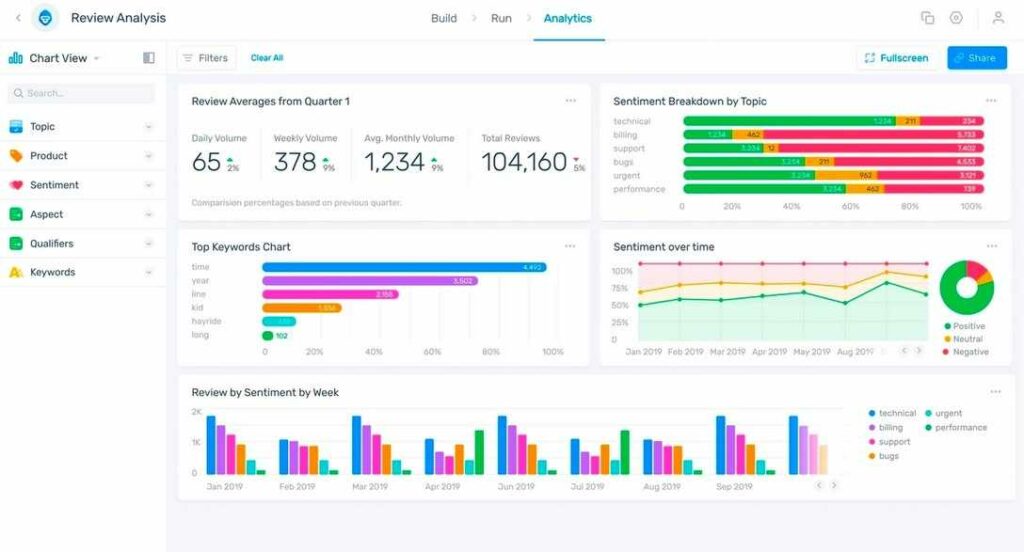
AI Skills to Break the Internet: Your Guide to Going Viral!
- Date August 6, 2024
Break the Internet with Your AI Skills: A Viral Success Guide!
Out of the immense possibilities of AI let us find out what AI Skills do you need to break the internet and barriers of opportunities. In this guide we will go through all the necessary things you’ll need to become the best.
Understanding the Basics of Virality
Ever wondered why certain videos or posts just take off like wildfire while others sit unnoticed? Welcome to the enigmatic world of virality! Going viral is essentially the internet’s way of saying, “We love this!” It’s a blend of art and science, with a sprinkle of luck. But what if you could tilt the scales more in your favor using AI? Intrigued? Let’s dive in.
The Psychological Triggers
Let us explore the psychology behind going viral and wanting to go viral and see what kind of effects it has from individual and society perspective.
- Emotional Engagement: Humans are emotional beings. We share content that moves us—be it joy, surprise, anger, or awe. Guess what? AI can help identify these hot buttons. Tools like sentiment analysis can decide which emotions your draft evokes, helping you tweak it for maximum impact. Think of it like seasoning your words with the right spices.
- Surprise and Novelty: There’s a reason “clickbait” headlines work—they promise something startling or novel. AI tools can help generate these unexpected twists without crossing into the territory of false advertising. Novelty grabs attention but remember—the twist must deliver value to keep the audience hooked.
AI Tools and Platforms to Leverage
The temptation to constantly provide interesting content on social media may be unbearable for marketers, content creators, and business owners alike. But worry not because with the help of AI powered tools/technologies you can easily beat the tough times.
Content Creation Tools
You can save time when making social media posts by using AI content creation tools. These tools help with content creation, optimization, and management for a variety of social media platforms by utilizing artificial intelligence (AI) and natural language processing (NLP) technology.
Here are some areas and tools which can be useful in generating a viral content: –
- Text Generators: GPT-4, Jasper, and QuillBot are among the champions here. They can generate catchy headlines, engaging articles, and even script out entire video dialogues. These tools analyze what’s worked before and apply those principles to your content. Imagine handing over your rough ideas and receiving polished, reader-ready pieces. That’s exactly what these tools provide.
- Visual Content Creators: Tools like Canva, DALL·E, and DeepAI utilize AI to create stunning visuals. Why settle for ordinary images when you can have jaw-dropping graphics? Visuals are crucial in grabbing eyeballs, and these AI platforms know exactly how to blend aesthetics with engagement. Generate unique images by just writing a prompt or description of your image, it’s that simple.
Analytical Tools
Keeping up with current trends is crucial for anyone trying to stay competitive in today’s fast-paced digital environment. This is where sophisticated techniques for trend analysis are useful. These tools assist users in spotting trends before they become popular by analyzing large datasets to reveal patterns and hot subjects.
Social Media Analytics: Platforms like Sprout Social and Hootsuite aren’t just for managing posts. They use AI to analyze what’s trending, who’s discussing what, and where your target audience spends their time. This helps you craft content that’s not just timely, but also strategically positioned.
- Sentiment Analysis: With tools like Lexalytics and MonkeyLearn, you can gauge the mood of the internet at any given moment. Are people happy, outraged, or indifferent to a topic? Tailoring your content to ride the current sentiment wave can significantly boost your viral potential.
Crafting a Viral Strategy
AI is transforming content creation, optimization, and distribution by providing audiences with a more intelligent means of engagement and attention. With the help of these ideas, you will be able to use AI to create content after learning what works, recognize what works well, and personalize it, freeing up your time to concentrate on creativity and connection.
Identifying Your Audience
You wouldn’t sell ice to an Eskimo, right? Knowing your audience is the first step. Use tools like Google Analytics and SEMrush to gather insights on demographics, preferences, and behaviors. Your AI-generated content will only hit the mark if it speaks directly to your intended audience.
Creating Shareable Content
When you wake up in the morning, what is the first thing you reach for? Is that your phone? The majority says that the answer is yes. People stare at screens for about 44% of their waking hours on average, digesting stuff that can be shared.
You receive a text from a buddy containing the newest air fryer recipe that you simply must try. Through email campaigns and social media feeds, even complete strangers are continuously providing you with a daily digest of stuff that has been shared.
Let’s discuss some useful tips for creating such type of content: –
3. Content Creator (On Occasion)
Artificial intelligence content generators are already able to aid with repeated concept generation. Artificial intelligence can easily handle simple content marketing chores, crafting short social media posts and formulaic emails. AI may sometimes even generate a first draft of longer-form content, replacing a lot of the tasks performed by human content marketers.
- Relatable Stories: Viral material frequently connects with a large audience by drawing on shared human experiences. People are more inclined to share content with their friends and followers when they identify with it. How often have you shared a post that made you feel like, “This is so me?”
- Infographics and Memes: Visual content rules in the age of short attention spans. Infographics simplify complex information into digestible visuals, while memes tap into cultural trends and humor. Tools like Piktochart and Imgflip can help you create these with AI, ensuring your visuals are both relevant and witty.
- Timing and Distribution: Say you’re at a party and someone cracks a joke that makes the whole crowd laugh. Imagine telling the same joke to the same group the next day. There’s a good probability it won’t have the same effect. Everything depends on timing. The timeliness of your material can make or break its chances of going viral in the digital realm.
- Right Time, Right Place: Timing can make or break your viral campaign. Tools like Buffer and Later analyze the best times for posting based on your audience’s activity. Post during these peak times to maximize visibility and engagement. Making the most of current events, trends, and your audience’s daily habits is all part of posting at the correct moment.
- Influencer Collaborations: Collaborating with influencers is like borrowing their megaphone. With tools like BuzzSumo, you can find influencers who align with your brand values and audience. Offering them AI-enhanced content can be a win-win, as they get quality material while you tap into their follower base.
Case Studies of AI-Driven Viral Success
AI is paving the way for more innovative, data-driven, and customer-focused marketing strategies as it develops, giving companies who use this technology a competitive advantage.
Case Study 1: AI-Generated Art
AI-generated art pieces have taken the internet by storm. Projects like “Portrait of Edmond de Belamy” not only went viral but also fetched high auction prices. This shows how AI’s creative capacity can intersect with human curiosity to create buzz-worthy content.
Case Study 2: Viral AI Blogs
Blogs powered by AI, like those automatically updated with the latest trends and insights, have garnered massive attention. Such examples underscore the importance of timely, relevant content made possible by AI’s predictive abilities.
- OpenAI Blog: –One of the most well-known AI safety research organizations in the world, OpenAI, focuses on the long-term effects of cutting-edge technology in its blog. Posts include a wide range of subjects, including the technical aspects of self-supervised learning and model releases like CLIP and DALL-E.
- Analytics Vidhya: –For employment, forums, tutorials, and other resources, the data science community turns to Analytics Vidhya. Similarly, their vast blog offers content for every level and covers a wide range of subjects.
Case Study 3: Social Media Campaigns
AI-driven social media campaigns, like Coca-Cola’s AI-driven content for personalized cans, have seen impressive engagement. These campaigns tailor content to user interactions, making the user feel valued and understood, thus increasing shareability.
Avoiding Common Pitfalls
When trying to create potentially viral content it’s very normal to face pitfalls or hindrances that can affect your content, resulting in loss of reaching to a bigger audience. It’s not so easy, and there are still some rules that must be followed for things to work. Let’s understand what reasons behind this can be occurrence.
Over-reliance on Automation
Despite AI’s strength, human ingenuity shouldn’t be replaced by it. Consider AI as your sous-cook bringing the ingredients to the table; you are the chef who brings the dish to life in the end. For the greatest results, combine human intuition with AI.
Ignoring Audience Feedback
It’s like performing a concert in an empty room when you ignore your audience. Utilize feedback loops, such as comments, shares, and likes, to continuously improve your content approach. By evaluating this feedback and making real-time enhancement suggestions, AI systems can be helpful.
The Future of AI in Viral Marketing
In 2024, the commercial marketing environment is expected to undergo significant change, primarily due to advances in artificial intelligence (AI). This revolution involves a total rethinking of how marketing department’s function, plan, and interact with their target consumers rather than just a change in techniques and technologies.
AI and Personalization
Personalization is the future. AI will continue to evolve, making it possible to tailor content to the individual level. Imagine each viewer seeing a slightly different version of your post that resonates personally with them.
Emerging Technologies
Look out for technologies like virtual reality (VR) and augmented reality (AR), powered by AI. These techs can create immersive experiences that captivate and engage large audiences, offering new avenues for viral content.
Conclusion
Breaking the internet isn’t just about luck—it’s about strategy, timing, and using the right tools. AI can be your secret weapon in creating content that doesn’t just get seen but gets shared and liked. But keep in mind that great content is required for it to go viral! If your material is uninteresting and of little value to your audience, these suggestions will not be effective. Don’t forget to concentrate on consistency.
Frequently Asked Questions
Welcome to the FAQ section for our blog post on unlocking the secrets of Gen AI and the essential tools required for success. Here are some common questions and answers to help you grasp the essence of this transformative topic:
You must first comprehend how each form of social media network’s algorithm functions and how you might take advantage of it to make a post go viral.
Not necessarily, if your material is enjoyed, shared, and helpful to your audience, it can become viral even if you only have a few hundred or thousand followers.
Getting over 100,000 likes and views on YouTube, TikTok, and Instagram is what’s referred to as going viral. On a social media site like Facebook, where 1000 people view your material and half of them like it, your virality percentage will be far higher, this number is considerably smaller.
You may also like

Unveiling AI Strategies of Millionaires

Save Time & Make Money with Gen AI Tools





